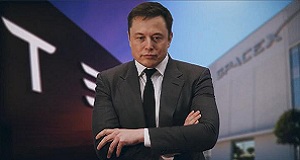Introduction
Elon Musk was born on June 28, 1971, in the capital of South Africa, Pretoria. He is a South African-born American entrepreneur who co-founded the electronic-payment firm PayPal and later on formed SpaceX, maker of launch vehicles and spacecraft. He was also one of the first notable investors, as well as chief executive officer of, the electric car manufacturer Tesla, which is a vehicle manufacturing company mainly focused on electric vehicles.
Early Life
Musk was born to a Canadian mother and a South African father. He demonstrated an early talent for technology and entrepreneurship. At the age of 12, he made a video game named ‘Blastar’ and then sold it to a computer magazine. In 1988, after getting a Canadian passport, Elon Musk left South Africa because he was reluctant to promote apartheid through mandatory military service and because he endeavoured the greater economic opportunities available in the United States.
PayPal and SpaceX
At the age of 17, Elon Musk attended Queen’s University in Kingston, Ontario in 1989 and in 1992 he migrated to the University of Pennsylvania, Philadelphia, where he received a bachelor’s degree in physics and economics in 1995. He joined a graduate school in physics at Stanford University in California, but he left after only two days because he knew that the technology had much more potential to change community than the work in physics. In the year 1995, Elon Musk founded ‘Zip2’, a company that provided maps and business directories to online newspapers. In 1999 Zip2 was sold to the computer manufacturer company Compaq for almost $307 million. Elon Musk then founded an online financial services company named ‘X.com’, which later became PayPal, which is specialized in transferring money online without any restriction or barrier and even internationally. This organisation was then sold to eBay through an online auction in 2002 for $1.5 billion.
Elon Musk was long demonstrated that for life to survive, humanity has to become a multi-planetary species. However, he was disappointed with the great cost of rocket launchers. In the year 2002, Elon Musk founded a company ‘Space Exploration Technologies’ (SpaceX) to make more affordable rocket launchers. Its first two rockets were the Falcon 1 (first launched in 2006) and the larger Falcon 9 (first launched in 2010), which were designed to cost much less than competing rockets. A third rocket, the Falcon Heavy (first launched in 2018), was designed to carry 117,000 pounds (53,000 kg) to orbit, nearly twice as much as its largest competitor that was the Boeing Company’s Delta IV Heavy, for only one-third of its cost. SpaceX also designed the Dragon spacecraft, which carries equipment and supplies to the ISS (International Space Station) and is designed to carry a maximum of seven astronauts. Elon Musk sought to reduce the cost of spaceflight by designing a fully reusable rocket that will lift off and return to the launchpad it propelled from. SpaceX’s Grasshopper rocket made a number of short flights to test such technology at the beginning of 2012.
Tesla
Musk had long been fascinated by the potentialities of electric cars, and in 2004 he became one of the major investors of Tesla Motors (later renamed as Tesla), an electric car company founded by two entrepreneurs Marc Tarpenning and Martin Eberhard. In the year 2006, Tesla introduced its first car, the Roadster, which could travel approximately 394 km (245 miles) on a single charge. Unlike most former electric vehicles, which Elon Musk thought was stodgy and uninteresting, it was a sports car that could go from 0 to 97 km (60 miles) per hour in less than 4 seconds. The company’s initial public offering raised about $226 million in the year 2010. Tesla introduced the Model S sedan after two years, which was acclaimed by automotive critics for its performance and design. The company won further appreciation for its Model X luxury SUV, which went on to sell in the market in 2015. In 2017, the ‘Model 3’, a cheaper vehicle, went into production.
Musk revealed limitations about Tesla being publicly traded, and he made a series of tweets about taking the company private in August 2018, noting that he had “secured funding.” After a month the U.S. Securities and Exchange Commission (SEC) sued Elon Musk for securities hoax, claiming that the tweets were “false and misleading.” Shortly following Tesla’s board rejected the SEC’s proposed agreement, reportedly because Musk had warned to resign. However, this news sent Tesla’s stock plunging, and a raucous deal was ultimately accepted. Its terms included Musk stepping down as chairman for three years, though he was allowed to continue as CEO. Disappointed with the proposed cost ($68 billion) of a high-speed rail system in California, Elon Musk proposed an alternate faster system in 2013, named as the Hyperloop, a pneumatic tube in which a pod carrying 28 passengers would travel the 560 km (350 miles) between San Francisco and Los Angeles in 35 minutes at a top speed of 1,220 km (760 miles) per hour, almost the speed of sound. Elon Musk claimed that the Hyperloop would only cost $6 billion and that, with the pods departing every two minutes on an average, the system could hold the six million people who travel on that route in a year. However, he asserted that, between running SpaceX and Tesla, he could not devote time to the Hyperloop’s development.




